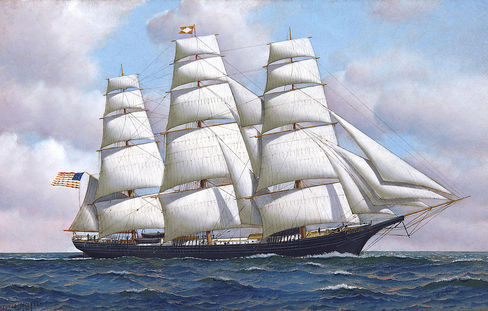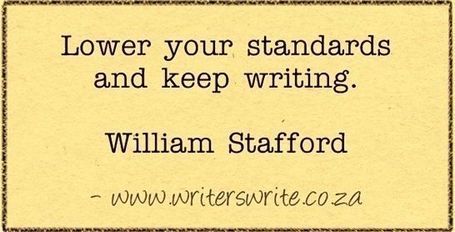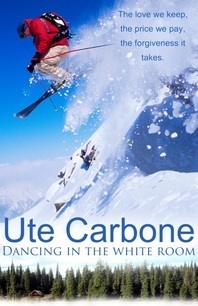Ute Carbone's Blog, page 20
November 21, 2014
The Flying Cloud
 The Flying Cloud Under Full Sail by Antonio Jacobsen As I've mentioned, I'm currently working on a final full length novel that will complete the Sweet Lenora series. The book's title, Sweet Auralie, comes from the name of the fictional ship that Anton and Lenora build and sail from Salem, Massachusetts to San Francisco in hope of breaking the record for fastest sail.. The ship and the adventures Anton and Lenora encounter are, of course,the product of my imagination. As with most historical fiction, though, there is a real history upon which Sweet Auralie and her travels are based..
The Flying Cloud Under Full Sail by Antonio Jacobsen As I've mentioned, I'm currently working on a final full length novel that will complete the Sweet Lenora series. The book's title, Sweet Auralie, comes from the name of the fictional ship that Anton and Lenora build and sail from Salem, Massachusetts to San Francisco in hope of breaking the record for fastest sail.. The ship and the adventures Anton and Lenora encounter are, of course,the product of my imagination. As with most historical fiction, though, there is a real history upon which Sweet Auralie and her travels are based..While researching the clippers of the mid-eighteenth century, I came upon the story of Flying Cloud, a super clipper built in East Boston in 1851. In 1854, she set the world record for fastest sailing ship, making the journey from Boston to San Francisco, around the horn of South America, in eighty nine days. This record is all the more remarkable when you consider that the passage, a distance of over fifteen thousand miles, usually took a full six months to complete and that she held this record for over a hundred years, until 1989 when it was broken by Thursday’s Child. The most astounding fact though, was that the ship’s navigator was a woman,
Eleanor Creesy, called Ellen, was the wife of Captain Josiah Creesy. That a captain’s wife would go to sea with her husband was not that unusual at the time. It was highly unusual that Ellen served as navigator for her husband, a skill she’d learned from her father, who had been captain of a coastal trading schooner.
The trip aboard the Flying Cloud was, as you might imagine, much smoother than the one I'm making up for the Sweet Auralie. It’s my job as a novelist to add an extra level of tension or two to the narrative. This though, doesn’t make the Flying Cloud, her record, or her female navigator any less extraordinary.
 More about the Sweet Lenora Series
More about the Sweet Lenora Series
Published on November 21, 2014 14:05
November 6, 2014
The okay-maybe-not-so-bad American Novel #Amwriting
 My friend Lana Hechtman Ayers posted this quote on Facebook the other day. It's a thought for keeping as I gear up to finish Sweet Auralie, the final, full length novel that will conclude the Sweet Lenora Series.
My friend Lana Hechtman Ayers posted this quote on Facebook the other day. It's a thought for keeping as I gear up to finish Sweet Auralie, the final, full length novel that will conclude the Sweet Lenora Series.There is, every time I pick up the pen or fire up the computer, the hope that this book will be the One. The Prince Charming of a book that will bring complete and utter happiness. The one so well put together it could make angels, or at the very least my editor, weep with joy upon reading it. It will become the new Great American Novel, put into the cannon, filed next to the works of luminaries like Fitzgerald and Cather.
And, as the writing continues I come to realize--well, okay, truly I've realized it all along--that the book will not reach those soaring heights. Sure, it's a good story and sometimes I can actually open the file and say, "Hey, this isn't too bad." Make no mistake, I love these characters and am very invested in them, I love the twists and turns that happen as I write the draft. I just wonder if it's good enough. That's not a productive place to be. Trying for greatness is fine, but perfectionism isn't. Trying to make it perfect stops me in my tracks, it keeps me from writing anything at all. And, besides, beyond making the book the best I can make it, I have little control over how it will be received by readers, how well it will sell or what reviewers will say about it.
Perfection is a myth, at any rate. At best, it creates hesitation and misgiving. At worst, it destroys the story. So, as I sail again with Anton and Lenora, I'm going to remind myself I'm writing the okay-hey-it's-not-too-bad American novel. Maybe, that way, I'll be able to write 'the end' on my draft before too long.
 More on the Sweet Lenora Series
More on the Sweet Lenora Series
Published on November 06, 2014 09:27
November 3, 2014
A peek into the pages: The Fall Line #Amwriting
 Buy Dancing at TMP Dancing in the White Room, a contemporary women's fiction set in ski world, was released last February. I love writing about skiing, and the world created in this story, so much so that I decided to give Creech, one of the characters in Dancing his own story. The Fall Line is about Creech in his new job as ski coach to the US ski team and ski superstar Mia Whitmeyer,, who is hoping to win her seventh world cup victory.
Buy Dancing at TMP Dancing in the White Room, a contemporary women's fiction set in ski world, was released last February. I love writing about skiing, and the world created in this story, so much so that I decided to give Creech, one of the characters in Dancing his own story. The Fall Line is about Creech in his new job as ski coach to the US ski team and ski superstar Mia Whitmeyer,, who is hoping to win her seventh world cup victory. The story is humming along, though it's not done yet--and I have to leave it be for a while so I can finish another love story, that of Anton and Lenora, as I wrap up the Sweet Lenora historical series.
Here, uncut and as yet unedited, is a little taste of Fall Line. I hope you like it!
The Fall Line
Mia
I tried to get into it. I told myself I wanted this, I needed this; a romantic fling with a passionate young Italian man who smelled of expensive cologne and who would mean nothing in my life. I tried, but as I stood there and kissed him back for all I was worth, all I could think was it would be over soon. And soon, I’d feel worse for having done this. And then Creech waltzed back in to my brain and my next thought was that this guy’s kisses weren’t the ones I wanted.
I pulled back. “I’m sorry. This is a terrible idea.”
He looked at me with questions in his eyes. “I’m sorry,” I repeated. “I can’t.” And I turned and walked away, before he could say anything, hoping he didn’t take it into his head to do something stupid or romantic like follow me and call my name.
He didn’t follow and I turned the corner and he was gone. I nearly ran back to our hotel, my heart hammering as my head asked what I had been thinking. I went into the lobby. A hot bath, alone, seemed like a good idea. A dark room and a bed to myself seemed an even better idea.
Creech stood at the bank of elevators, his back to me; we were the only people besides the concierge in the lobby. The elevator dinged, the door opened and he stepped inside. I ran to get into the car with him before the door shut. “Mia,” he said, sounding surprised.
I grabbed his jacket and kissed him as though my life depended on it.
Published on November 03, 2014 13:47
October 31, 2014
From the #Amwriting Files-- Back to Basics
I've been absent from my blog for awhile. If you peek into the garret, you'll notice I've been typing away. I have quite a few stories I need to work on--currently, I'm working on a contemporary ski story, called The Fall Line, which is related to Dancing in the White Room.
In the interest of posting a blog now and again, I thought I'd offer up an old blog. (Sorry, I know it's kind of cheating.) This is a blog I'd written for The Writer's Vineyard a few years back about process. It's relevant, though, and serves as a reminder to me to go out and enjoy the New England fall weather while I can.
 Mill Pond at Mines Falls Park, near my house, as the leaves were beginning to turn last month.
Back to Basics;
Mill Pond at Mines Falls Park, near my house, as the leaves were beginning to turn last month.
Back to Basics;
I’ve been trying to up my productivity. I’ve heard stories on line of writers who write five thousand words a day, who manage three books a year. And I I’ve thought to myself, if they can do it so can I. I’ve been trying to measure my productivity with word count. I have little charts that tell me about progress. I have marks on my calendar.
The problem is that I don’t work best that way. My progress isn’t that straight forward. My process isn’t linear.
This is how it works for me: I have an idea. I write it down. I ruminate on the idea, letting it marinate in my brain juice for a week or two or ten. I take lots of walks and let my mind buzz around-- landing now and again on the story idea, flitting to other ideas-- like a bee pollinating a garden. After a week or two or ten, I pick up my pen and notebook. I write an inane and thoroughly awful first draft, sketching out the idea and giving it some substance. I cross out sentences. I change scenes around in time and space.
Then I sit down at the key board, waggle my fingers in a warm up exercise, and begin to type. I slow down my quick moving thoughts. I take time with my metaphors. I tighten the dialog. I enhance the scenery. Then I take another walk. I return to the keyboard. I cross out sentences. I rewrite dialog strings. I read scenes aloud to see how they sound. If I’ve done my job, the metaphors are fresh, the words sing, and the characters walk onto the scene like flesh and blood people. This is my aim, though I always and inevitably fall short of the mark.
I go for another walk. I look at the manuscript again. I pick up my pen. I go to the keyboard. I repeat the process until I’ve taken it as far as I possibly can before passing it along.
This process, my process, can’t be measured in time and word count. It takes breathing room. And, in trying to condense it and make it run in neat straight lines, I’ve gotten lost. I’ve stopped breathing.
I need to go back to basics. I need to stop worrying about how much I can write in a day or a week or a year. I think I should go for a walk.
In the interest of posting a blog now and again, I thought I'd offer up an old blog. (Sorry, I know it's kind of cheating.) This is a blog I'd written for The Writer's Vineyard a few years back about process. It's relevant, though, and serves as a reminder to me to go out and enjoy the New England fall weather while I can.
 Mill Pond at Mines Falls Park, near my house, as the leaves were beginning to turn last month.
Back to Basics;
Mill Pond at Mines Falls Park, near my house, as the leaves were beginning to turn last month.
Back to Basics;
I’ve been trying to up my productivity. I’ve heard stories on line of writers who write five thousand words a day, who manage three books a year. And I I’ve thought to myself, if they can do it so can I. I’ve been trying to measure my productivity with word count. I have little charts that tell me about progress. I have marks on my calendar.
The problem is that I don’t work best that way. My progress isn’t that straight forward. My process isn’t linear.
This is how it works for me: I have an idea. I write it down. I ruminate on the idea, letting it marinate in my brain juice for a week or two or ten. I take lots of walks and let my mind buzz around-- landing now and again on the story idea, flitting to other ideas-- like a bee pollinating a garden. After a week or two or ten, I pick up my pen and notebook. I write an inane and thoroughly awful first draft, sketching out the idea and giving it some substance. I cross out sentences. I change scenes around in time and space.
Then I sit down at the key board, waggle my fingers in a warm up exercise, and begin to type. I slow down my quick moving thoughts. I take time with my metaphors. I tighten the dialog. I enhance the scenery. Then I take another walk. I return to the keyboard. I cross out sentences. I rewrite dialog strings. I read scenes aloud to see how they sound. If I’ve done my job, the metaphors are fresh, the words sing, and the characters walk onto the scene like flesh and blood people. This is my aim, though I always and inevitably fall short of the mark.
I go for another walk. I look at the manuscript again. I pick up my pen. I go to the keyboard. I repeat the process until I’ve taken it as far as I possibly can before passing it along.
This process, my process, can’t be measured in time and word count. It takes breathing room. And, in trying to condense it and make it run in neat straight lines, I’ve gotten lost. I’ve stopped breathing.
I need to go back to basics. I need to stop worrying about how much I can write in a day or a week or a year. I think I should go for a walk.
Published on October 31, 2014 09:51
October 5, 2014
A Sneak Peek at Georgette Alden Starts Over
 As I mentioned last time, I've finished a draft of my new romantic comedy, Georgette Alden Starts Over. I've spent the past week or so going over the story and polishing it a bit before I send it to a few readers. I've loved spending time with Georgette, who is larger than life and can be quite dramatic. I'm about to go back to my ski story, Fall Line, and I look forward to spending time with those characters, but I think I'm going to miss hanging out with GA and friends.
As I mentioned last time, I've finished a draft of my new romantic comedy, Georgette Alden Starts Over. I've spent the past week or so going over the story and polishing it a bit before I send it to a few readers. I've loved spending time with Georgette, who is larger than life and can be quite dramatic. I'm about to go back to my ski story, Fall Line, and I look forward to spending time with those characters, but I think I'm going to miss hanging out with GA and friends. The story isn't quite yet ready for prime time, but I thought I'd share the opening with you. These are the first few paragraphs of the story--
Georgette Alden was disappointed at waking up in her own bed the morning after Electra Holmes was killed. She had hoped to wake up in a private suite at St. Luke’s hospital surrounded by massive bouquets from well wishers and a copy of the New York Post left discreetly on the bed table. Not that Georgette gave two cents for a rag like the Post, but it did excel in gossip. In the scenario she envisioned, the paper was opened to the gossip pages and the headline read: Despondent Star Attempts To Take Her Life.
To achieve the desired scenario, Georgette had swallowed down four Xanax with the quarter bottle of Chardonnay stashed in her refrigerator next to a half eaten Portobello burger and the wilted remains of an arugula salad. This was the only food in the refrigerator and also all that was left to remind her of the farewell party at Harvey Bristol’s townhouse. At the party, Georgette had imbibed half a bottle of the Pinot Grigio Harvey had flown in from his vineyard in Italy. Harvey had accompanied her back to her apartment for sex that was sweaty and discomforting. Pity sex, Georgette had thought. It was after this Georgette decided on staging an attempted suicide.
Published on October 05, 2014 10:36
September 29, 2014
Finishing Georgette
 Rockefeller Center, in the heart of Manhattan, is where Georgette worked. Image courtesy of Wikimedia. Last Friday, I wrote the very last scene of my new romantic comedy, a book that's in my work in progress file as "Georgette Alden Starts Over". It's the story of daytime television star Georgette Alden and what happens to her when Electra Holmes, the character she's played on the daytime drama "Our Time Tomorrow" for over thirty years, is killed off.
Rockefeller Center, in the heart of Manhattan, is where Georgette worked. Image courtesy of Wikimedia. Last Friday, I wrote the very last scene of my new romantic comedy, a book that's in my work in progress file as "Georgette Alden Starts Over". It's the story of daytime television star Georgette Alden and what happens to her when Electra Holmes, the character she's played on the daytime drama "Our Time Tomorrow" for over thirty years, is killed off. Georgette is nothing if not a drama queen, and in imitation of my character, I fist pumped and sauntered around the garret a few times when I wrote the ending--because (yes!!) I've been working on this book on and off for over two years. And (yes!!) I have a draft, a complete story all written.
It's not ready to roll out yet, of course. Over the next few weeks, I'll edit it through, then give it to a few readers and then later edit through it again when I prepare it for submission. If I'm lucky enough to find a home for it, it'll pass three or four time between me and my editor and then through the hands of a copy editor and then back to me for a final crossing of the t's and dotting of the i's. In other words, it's a looong process.
In truth, I don't mind. I've come to like the editing part of my work, I love polishing and refining, trying to make a book the best it can be.
For now, I can take some satisfaction in having a draft.
Published on September 29, 2014 08:32
September 15, 2014
A Touch of Cookery--#Bruschetta
 The fresh tomatoes in our garden are nearly all harvested. I'll miss the wonderful taste. This bruschetta is fabulous made with big boys picked ripe from the vine, but if those aren't available you can use vine ripened tomatoes from the market. The recipe is easy and always a favorite here at chez Carbone
The fresh tomatoes in our garden are nearly all harvested. I'll miss the wonderful taste. This bruschetta is fabulous made with big boys picked ripe from the vine, but if those aren't available you can use vine ripened tomatoes from the market. The recipe is easy and always a favorite here at chez CarboneTomato Bruschetta
6 slices of crusty bread (ciabatta or sesame semolina work well)
olive oil
3 vine ripe tomatoes
3 slices fresh mozzarella
for dressing--
3 tablespoons extra virgin olive oil
1 tablespoon balsamic vinegar
2 cloves garlic, minced
1 teaspoon basil
Sprinkle bread slices with olive oil and place on baking sheet. Bake at 400 degrees for eight minutes, or until toasted. While bread is toasting, dice tomatoes and mozzarella and place in a medium-sized bowl. In a small bowl, combine extra virgin olive oil, vinegar, garlic, and basil. Pour dressing over tomatoes and mozzarella and mix until well blended. Spoon mixture over toasted bread.
Enjoy!
Published on September 15, 2014 09:19
September 8, 2014
A peek into the pages--Sweet Auralie
Published on September 08, 2014 13:34
August 19, 2014
Departure
 I've finally gotten around to putting a new story up on the Flash! page. Departure is an experimental piece that's been collecting dust in my computer files for a bit. I'd love to know what you think of it-- Read Departure
I've finally gotten around to putting a new story up on the Flash! page. Departure is an experimental piece that's been collecting dust in my computer files for a bit. I'd love to know what you think of it-- Read Departure
Published on August 19, 2014 12:57
August 14, 2014
Sight and Sound

All writers have strengths and weaknesses and, in order to grow as a writer, I believe it's important to know what they are.
The weaknesses in your own writing are often easier to spot than the strengths. For me, weakness shows in the details. I'm not a detail oriented person and so the nitty gritty part of writing is often the hardest thing for me. I'm a terrible speller, I can't spell Manhattan let alone ostentatious--both of which I had to check on spell check as I wrote this. Sometimes, my misspelling is so bad that spell check has no correction and I'll substitute another word for the original. I'll often substitute a word that sounds like the one I want for the one I want. I know, beyond any doubt, the difference between your and you're and its and it's, but I still manage to use them incorrectly when I write quickly.
I think I make these mistakes because I tend to be more auditory than visual. I hear the dialog and narratives I create rather than see the words as I put them to the page. Sometimes, I get them wrong.
The greatest weakness, though, can also be a strength. I suspect my 'auditory' writing style also makes it easy for me to write dialog. I love the way language sounds, the way the sound of it can be used to set the tone of a story. I love the rhythms of speech and how it varies from place to place, and from era to era. I use these frequently and I think I've gotten pretty good at using them.
I would also suspect that writers who are more visual in their approach have a different set of strengths. The precision of language allows them to 'paint' the scene with clarity. The meaning of their words isn't ever muddled. They are better spellers and don't make the silly mistakes I make.
All writers use both sight and sound, but I believe one is dominant and takes the lead. Maybe this is true of readers as well. Some readers focus in on description, and clear storytelling, others focus on the poetry and music of language.
.Which do you 'lead' with, sight or sound?
Published on August 14, 2014 12:37




